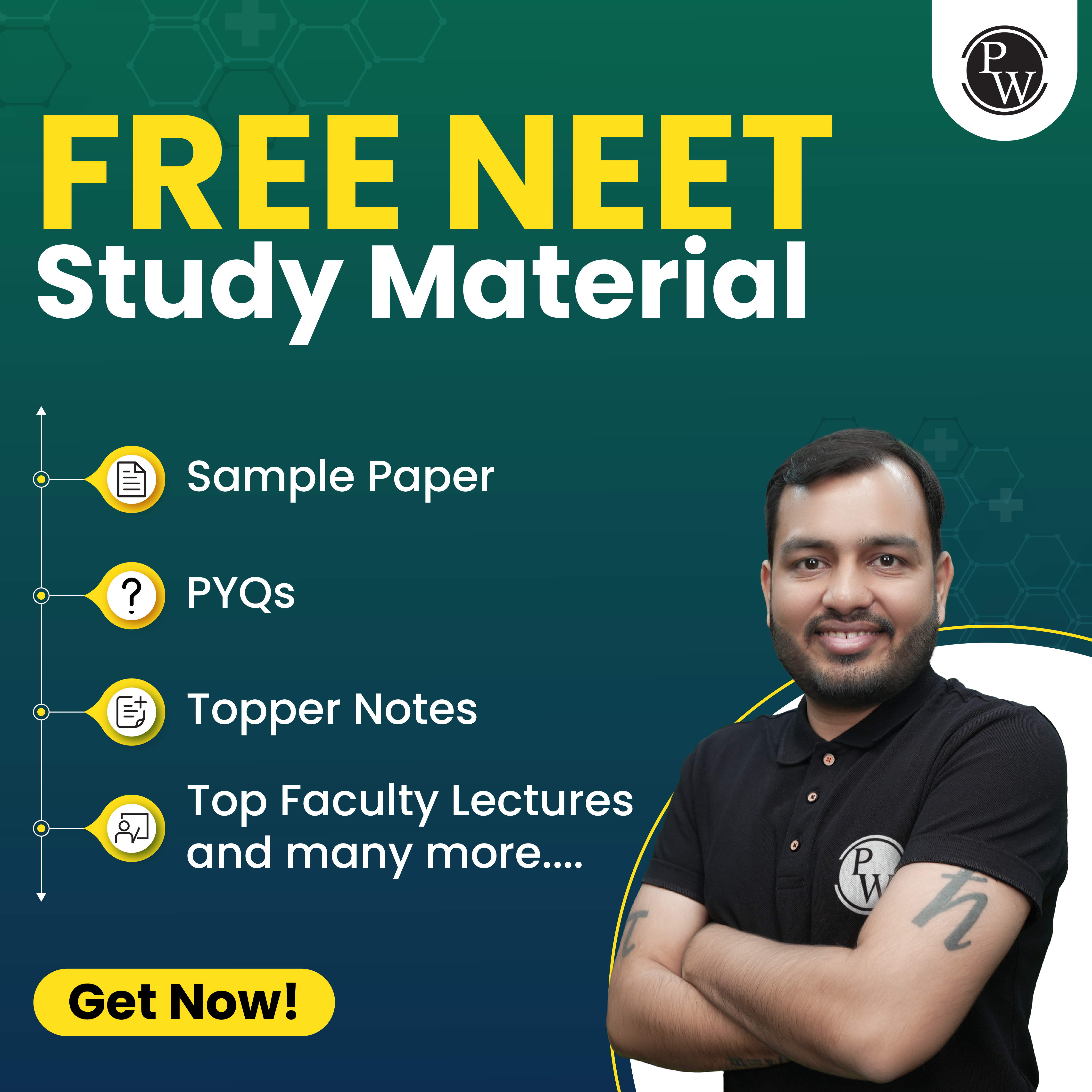
Air Pollution MCQ Introduction
Air pollution is defined as an alteration in air quality caused by chemical, biological, or physical impurities in the environment. As a consequence, air contamination leads to the unwanted accumulation of pollutants in the atmosphere, in addition to an abnormal rise in the amount of specific atmospheric elements. There are two types of air pollution: visible and invisible pollution. Air Pollution is included in the Pollution topic which holds a good weightage in the NEET medical examination. The topic is easy and offers a good opportunity to score good marks. One should have a good awareness of the types of air pollution, its causes, and its effects. In this article, we will discuss some Multiple Choice Questions based on Air pollution.NEET Study Material, Free Sample Papers, Book, Toppers Notes, PYQs
Air Pollution MCQ
Q 1. Which of the following assertions regarding SMOG is true?
- SMOG originates from fog.
- SMOG is formed from smoke.
- SMOG originates from water vapor.
- SMOG originates through the combination of fog and smoke.
Answer- Option (1) is correct.
Explanation: Neither fog nor smoke alone can result in smog. As the name suggests smoke is a combination of smoke and fog. When smoke released from burning fossil fuels, wood, etc combines with fog in the atmosphere, it results in smog which reduces visibility and makes breathing difficult. Water vapor directly does not result in smog formation.
Q 2. The main contributors of ________ include fumes, ash, nitric oxide, smoke, dust, and sulfur dioxide.
- Primary Pollutants.
- Secondary pollutants.
- Biodegradable Pollutants.
- None of the above.
Answer- Option (1) is correct.
Explanation: Smoke and ash from burning fossil fuels and wood, dust, fumes, and gases like sulfur dioxide and nitric oxide are considered primary pollutants. Secondary pollutants include ozone, nitrogen dioxide, and particulate matter that mix or combine with other substances and degrade air quality. Biodegradable pollutants include substances like kitchen waste, fruit peels, and other organic stuff that release gases that then cause air pollution.
Q 3. Increased levels of air pollution primarily cause _________
- Soil erosion
- Global Warming
- Respiratory complications
- all of the above
Answer- Option (3) is correct.
Explanation: The main effect of increasing air pollution including dust, smoke, and allergens is damage to the respiratory system of animals. These minute particles accumulate in the lungs, nostrils, and airways and block incoming air. Air pollution indirectly contributes to global warming by increasing greenhouse gases that trap heat and in turn, increase the temperature. Soil erosion is mainly caused by an increase in soil pollution which damages the topsoil making it infertile.
| NEET Exam Important Links | |
|---|---|
| NEET Syllabus | NEET Biology Notes |
| NEET Eligibility Criteria | NEET Exam Pattern |
| NEET Previous Year Question Papers | NEET Biology Syllabus |
Q 4. The atmosphere is naturally composed of many gases which are present in different ratios. Which gas is present in the highest quantity?
- Oxygen
- Nitrogen
- Hydrogen
- Both (1) and (2)
Answer- Option (2) is correct.
Explanation: Nitrogen is the most abundant gas in the air and comprises nearly 78% of the total air. It is followed by oxygen which comprises around 21% of the total air quantity. The remaining 1% of gases include carbon dioxide, water vapor, inert gases, and so on. Hydrogen is present in less quantity in the air. The presence of nitrogen makes the air inert and prevents rapid oxidation that can be caused by excess oxygen.
Q 5. Particulate matter are minute particles that remain suspended in the air and cause irritation when inhaled. Which of the following is an example of particulate matter?
- Nitrogen Dioxide
- Water Vapor
- Ozone
- Fly ash.
Answer- Option (4) is correct.
Explanation: Particulate matter (PM) refers to extremely minute granules and liquid droplets floating in the air. It consists of a complex mixture of organic and inorganic particles, including dust, pollen, soot, smoke, and liquid droplets. Particulate matter may be dangerous to human health and the environment because of its size, composition, and origin. Fly ash is an example of a microscopic particle released from industrial effluents that can cause serious respiratory complications.
Q 6. How many distinct types of main pollutants account for around 90% of worldwide air pollution?
- 3
- 5
- 7
- None of the preceding.
Answer- Option (2) is correct.
Explanation: Natural disasters like volcanic eruptions contribute to air pollution. Agriculture is also a major contributor along with industrial effluents, and transportation including private and public vehicles. Thermal power plants and other power generation sources like hydroelectric plants are also one of the five major contributors to air pollution.
Also Check:
Q 7. In order to control the emission of harmful gases into the atmosphere, a catalytic converter can be used. What of the following are the effects of this device?
- Conversion of carbon monoxide into carbon dioxide.
- Conversion of nitric oxides into nitrogen dioxide.
- Conversion of hydrocarbons into water and carbon dioxide.
- All of these
Answer- Option (4) is correct.
Explanation: A Catalytic convertor uses enzymes to undergo oxidation-reduction reactions which convert toxic gases into less harmful variants. For instance, carbon monoxide when released directly into the air can cause serious respiratory complications so it is converted to carbon dioxide which is naturally present in the air. Similarly, nitric oxide can be converted to nitrogen dioxide and harmful hydrocarbons can be reduced to water and carbon dioxide.
Q 8. Which of the following devices is most effective in removing particulate matter from industrial effluents?
- Cyclonic separator.
- Electrostatic precipitator.
- Scrubber.
- Catalytic converter.
Answer- Option (2) is correct.
Explanation: Under the effect of an electrostatic precipitator, the particulate matters like dust and smoke acquire charge and get settled into charge plates. The purified air moves out of the device after being cleaned. This process is highly effective and removes almost 99% of the dust particles. The cyclonic separator is used to remove solid particles, the catalytic converter converts harmful gases into less toxic forms while a scrubber is also used to remove gases from the effluents using water.
Q 9. Which of the following condition cannot be caused by inhaling particulate matter?
- Asthma
- Irritation
- Bronchitis, Premature death
- Rhinitis and gastroenteritis.
Answer- Option (4) is correct.
Explanation: Rhinitis is a common infection of the nose caused by inhalation of allergens and dust. However, gastroenteritis is caused by infection of the stomach due to bacterial or fungal growth. Asthma, irritation, and bronchitis can be caused by particulate matter gains entry through the airways into the lungs and gets covered by mucus secretion. This causes severe breathing difficulty, swelling and oxygen efficiency in the body.

Q 10. Why is compressed natural gas (CNG) preferable to petrol?
- It burns the most effectively
- It is the more expensive
- It ignites less efficiently
- It can be tainted.
Answer- Option (1) is correct.
Explanation: To lessen air pollution, CNG (Compressed Natural Gas) is favored over petrol. This is due to the fact that CNG burns most effectively and leaves very little unburned. It is less expensive than fuel and cannot be tampered with.
Q 11. Which devices are fitted with catalytic converters?
- Plants
- Automobiles
- Electrostatic precipitator
- Cycles
Answer- Option (2) is correct.
Explanation: Automobiles have components made up of catalytic converters. They have more costly metals like platinum-palladium and rhodium that act as catalysts to reduce the release of harmful gases.Q 12. Which element in an electrostatic precipitation system can remove gases such as sulfur dioxide using a spray of water or lime?
- Detergent
- Electrode wires
- Corona
- Scrubber
Answer- Option (4) is correct.
Explanation: A scrubber in an electrostatic precipitator may remove gases such as sulfur dioxide with a spray of water or lime. It is a component through which polluted air enters and pure air is expelled.
Q 13. Which industries emit particle air pollution in addition to innocuous gases like nitrogen and oxygen?
- Oil industry
- IVF(In vitro fertilization clinics)
- Plant tissue culture labs
- Thermal power plants and smelters
Answer- Option (4) is correct.
Explanation: Smokestacks are produced by thermal power plants and smelters. These smokestacks include particulate matter and other gases that contain air contaminants as well as innocuous gases like nitrogen and oxygen.
Also Check:
Q 14. CFCs(Chlorofluorocarbons) have not been designated for use in refrigerators since they
- raise the temperature
- degrade ozone layer
- harm the ecosystem
- harm the human body.
Answer- Option (2) is correct.
Explanation: It is true that CFCs indirectly raise the temperature, and harm the ecosystem as well as the human body. However, these are indirect effects. The main harm from CFCs is their degrading effect on the ozone layer which allows harmful ultraviolet radiations from the sun to enter into Earth’s atmosphere. This is not recommended because the UV rays can damage plants, and animals, ionize gases and convert them into harmful ions.
Q 15. Fluorocarbons are among the contaminants that jet aircraft produced in the outer atmosphere and are referred to as
- Smog
- Photochemical oxidants.
- Loess
- Aerosols
Answer- Option (4) is correct.
Explanation: Smog is the combination of smoke and fog which results in a thick layer of suspended dust particles. Ozone and hydrogen peroxide fall in the category of photochemical oxidants. Loess is used to define large sediments or rocks of dust that are carried by winds. The fluorocarbons released from jet aircraft are called aerosols because liquid or solid particles get trapped in the gaseous emission resulting in damage to the respiratory systems of organisms when inhaled with the air.
Join Physics Wallah's NEET online coaching to boost your exam preparedness and increase your chances of success. Prepare hassle-free with a well-structured program that caters to the specific requirements of the NEET exam.Air Pollution MCQ FAQs
What is the definition of air pollution?
How can we control air pollution?
What is air pollution in 10 points?
What are the 7 main causes of air pollution?
What is the effect of air pollution?










